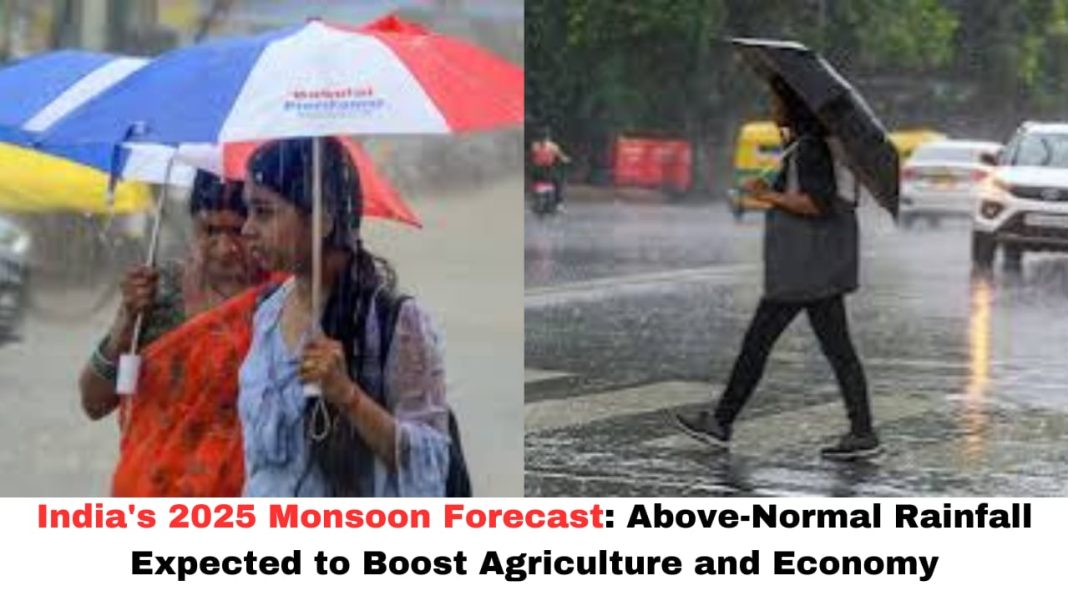Digital News Guru Environment Desk:
The India Meteorological Department (IMD) has forecasted an above-normal monsoon for 2025, predicting seasonal rainfall at 105% of the long-period average (LPA) of 87 cm, with a model error margin of ±5%. This marks the second consecutive year of favorable monsoon predictions, following 2024’s 107.6% of average rainfall.
Climatic Factors Supporting the Forecast
The IMD attributes the optimistic forecast to neutral El Niño–Southern Oscillation (ENSO) conditions and a neutral Indian Ocean Dipole (IOD), both of which are conducive to healthy monsoon rainfall. Additionally, reduced snow cover over the Northern Hemisphere and Eurasia during the preceding months is expected to favor monsoon activity.

India is forecasted to receive above-normal monsoon rainfall in 2025, with the India Meteorological Department (IMD) predicting seasonal rainfall at 105% of the long-period average (LPA) of 87 cm. This projection comes with a model error margin of ±5%.
Key Highlights:
- Favorable Climatic Conditions: The forecast is supported by neutral El Niño–Southern Oscillation (ENSO) conditions and a neutral Indian Ocean Dipole (IOD), both of which are conducive to healthy monsoon rainfall .
- Regional Variations: While most regions are expected to benefit from favorable rainfall, certain areas such as Ladakh, parts of the Northeast, and Tamil Nadu may experience below-normal rainfall .
- Agricultural Impact: A robust monsoon is crucial for India’s agriculture sector, which supports the livelihood of over 42% of the population and contributes approximately 18% to the country’s GDP .
- Economic Implications: Above-average rainfall can enhance crop yields, stabilize food prices, and support economic growth. It may also allow for increased exports of agricultural commodities like rice, onions, and sugar.
Regional Variations in Rainfall
While most regions are expected to benefit from above-normal rainfall, certain areas such as Ladakh, parts of the Northeast, and Tamil Nadu may experience below-normal rainfall. The IMD’s probabilistic forecast indicates a 59% chance of above-normal or excess rainfall nationwide.

Implications for Agriculture and Economy
A robust monsoon is crucial for India’s agriculture sector, which supports the livelihood of over 42% of the population and contributes approximately 18% to the country’s GDP. Good rainfall is expected to enhance crop yields, stabilize food prices, and support economic growth. It may also allow for increased exports of agricultural commodities like rice, onions, and sugar.
Economic Outlook and Inflation
India’s retail inflation eased to 3.34% in March 2025, the lowest rate in over five years, driven primarily by easing food prices. Economists anticipate that favorable monsoon conditions will help maintain low inflation levels, providing room for the Reserve Bank of India to consider further interest rate reductions to support economic growth.
Conclusion
The IMD’s forecast of above-normal monsoon rainfall in 2025 brings optimism for India’s agriculture sector and overall economy. However, regional disparities in rainfall distribution and the potential for extreme weather events necessitate vigilant monitoring and adaptive strategies to mitigate risks and maximize benefits.

India is expected to receive 105% of its long-term average monsoon rainfall in 2025, marking the second consecutive year of favorable rains. This forecast, excluding certain areas in the northwest, northeast, and southern Peninsular India, is anticipated to boost agricultural output, stabilize food prices, and support economic growth.
You May Also Read: Mehul Choksi Arrested in Belgium: A Major Development in the PNB Fraud Case








